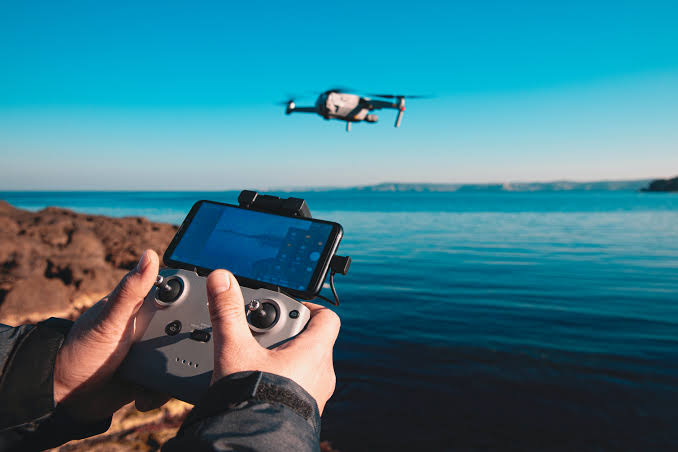Discover how to capture stunning aerial footage with drone videography. Learn about essential equipment, planning techniques, flying skills, and editing tips to create breathtaking videos. Enhance your aerial content with expert advice on camera settings, shot composition, and post-production techniques.
Drone videography has transformed way we capture and experience visuals. It offers unique perspectives that were once realm of dreamers and high-budget productions. Advent of consumer drones has made it possible for filmmakers photographers and hobbyists to achieve breathtaking aerial footage. To truly harness potential of drone videography, combination of technical skill creative vision and careful planning is required. This guide will delve into key aspects of capturing stunning aerial footage with drones. It will provide practical tips and insights to elevate your videography
Understanding Drone Capabilities
Before setting out to capture footage it’s essential to understand drone’s capabilities and limitations. Modern drones come equipped with high-resolution cameras and advanced stabilization systems. Various flight modes can enhance filming experience. Familiarize yourself with drone’s specifications, including camera resolution battery life, flight time and range. Knowing these details helps you plan your shoots more effectively. Avoid common pitfalls such as running out of battery or encountering signal loss.
Planning Your Shoot
A successful aerial video begins with thorough planning. This involves scouting locations understanding weather conditions and preparing shot list. Research potential filming sites in advance to identify key vantage points and interesting features. Consider how time of day and weather conditions will affect lighting and visibility. Early mornings and late afternoons often provide softer light. They create longer shadows, which can enhance visual appeal of your footage.
Creating shot list is also crucial. Decide on types of shots you want to capture such as sweeping landscape views, dynamic fly-throughs or close-ups of specific subjects. Having clear vision of your shots will help you execute plans more efficiently. It ensures you capture all necessary footage.
Mastering Flight Techniques
The quality of your aerial footage greatly depends on ability to control drone smoothly. Practice essential flight maneuvers like yaw pitch and roll. Achieve fluid camera movements. Avoid abrupt or jerky movements. They can detract from visual quality of your footage. Instead, focus on maintaining steady hand. Use gradual deliberate movements.
Utilizing automated flight modes such as waypoint navigation or orbit mode can help in achieving smooth and consistent shots. These modes allow drone to follow pre-set paths. They maintain circular trajectory around subject. This reduces need for constant manual control.
Optimizing Camera Settings
Camera settings play significant role in quality of your footage. Ensure drone’s camera is set to capture in highest resolution available. Adjust frame rate based on type of video you’re creating. Higher frame rates are ideal for capturing fast-moving subjects Lower frame rates suit more cinematic looks.
Another important setting is shutter speed. A general rule of thumb for achieving natural-looking motion blur is to set your shutter speed to twice frame rate. For example if you’re shooting at 24 frames per second shutter speed of 1/50th of a second is recommended. This helps maintain a cinematic appearance in your footage.
Color grading is another aspect to consider. Drones often capture footage in flat color profile. This can be adjusted in post-production to enhance colors and contrast. Familiarize yourself with basic color grading techniques. This brings out best in your aerial shots
Safety and Legal Considerations
Safety and legal compliance are paramount when operating drones. Before flying ensure you are aware of local regulations regarding drone usage. Many regions require registration of drones and adherence to no-fly zones. Respect for privacy laws is also crucial. Always fly your drone within line of sight. Avoid flying over people or congested areas.
Pre-flight checks are essential to ensure safety of your drone and quality of your footage. Inspect your drone’s battery levels and propeller condition before takeoff. Check camera settings as well. Conduct a test flight to familiarize yourself with drone’s response. Verify that all systems are functioning correctly.
Editing and Post-Production
Post-production is where aerial footage can truly come to life. Begin by organizing and reviewing footage. Select best shots. Utilize video editing software to cut and assemble clips. Pay attention to pacing and flow. Incorporate transitions and effects to enhance visual appeal of your video.
Sound design is another important aspect of editing. Adding suitable soundtrack or sound effects can significantly elevate emotional impact of your video. Ensure that audio complements visuals and enhances overall viewing experience.
Export final video in highest quality possible. Consider platform on which it will be shared. Different platforms may have specific requirements or recommendations for video resolution and format. Adjust export settings accordingly.
Continuous Improvement
Finally always seek opportunities for improvement. Analyze your footage critically. Identify areas for enhancement. Experiment with new techniques and settings. Stay updated with advancements in drone technology and video editing practices to keep your skills sharp and your content fresh.
In conclusion, capturing stunning aerial footage with drones involves blend of technical proficiency creative vision and meticulous planning. By understanding your drone’s capabilities, mastering flight techniques optimizing camera settings and adhering to safety and legal guidelines, you can produce breathtaking videos that captivate and inspire. With practice and dedication drone videography can become powerful tool for storytelling and artistic expression.
